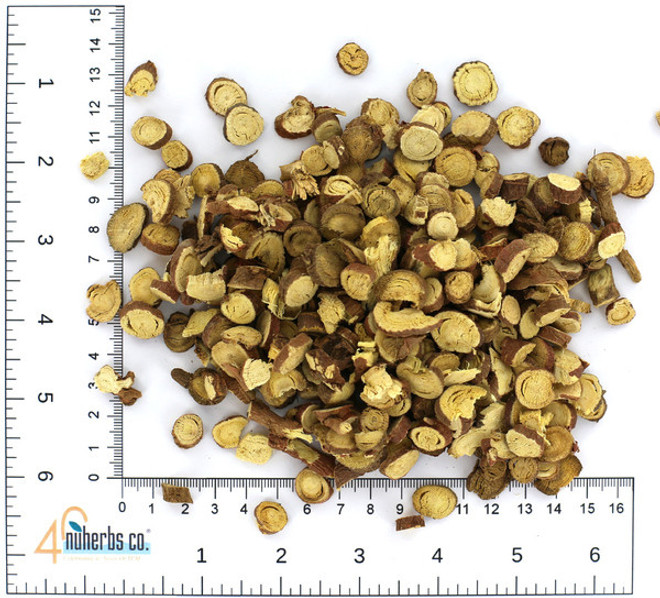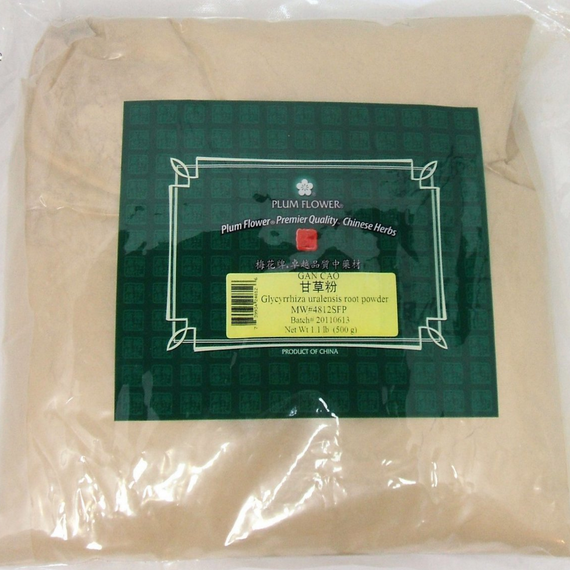Gan Cao (Licorice Root) in Traditional Chinese Medicine (TCM)
Gan Cao, known as licorice root in English, is a fundamental herb in Traditional Chinese Medicine. The scientific name for the licorice plant is Glycyrrhiza glabra. In TCM, it is prized not only for its own therapeutic properties but also for its ability to harmonize and enhance the effects of other herbs within a formula.
Mechanisms of Action For Gan Cao
Licorice root works through several mechanisms:
-
Anti-inflammatory Properties: It contains glycyrrhizin, which has a corticosteroid-like effect, helping to reduce inflammation in various conditions such as arthritis and allergies.
-
Immunomodulatory Effects: Gan Cao can modulate the immune system, boosting immune response when needed or suppressing it when it is overactive.
-
Antiviral and Antimicrobial: The root has been shown to be effective against several bacteria and viruses, partly due to its glycyrrhizin content.
-
Protection of Mucous Membranes: Licorice can soothe and coat mucous membranes in the digestive and respiratory tracts, making it effective for treating issues like peptic ulcers and sore throats.
-
Liver Protection: Licorice has hepatoprotective properties, helping to protect the liver from various toxins and promoting liver health.
-
Endocrine Function: It influences the endocrine system by mimicking the effects of adrenal cortical hormones, aiding in prolonged stress response and adjustment.
Traditional Uses of Licorice Root in TCM
In Traditional Chinese Medicine, Gan Cao is used in various ways:
-
Harmonizing Agent: It is often included in TCM formulas to harmonize and blend other herbs and reduce toxicity and harshness from other ingredients, making the overall formula smoother and more synergistic.
-
Treating Digestive Issues: Gan Cao is used to treat stomach ulcers, heartburn, and chronic gastritis. It is believed to soothe the stomach lining and restore balance.
-
Respiratory Support: It is commonly used for coughs and asthma because of its expectorant and anti-inflammatory properties, which help clear mucus from the lungs and bronchial tubes.
-
Skin Conditions: Applied topically in creams and ointments, licorice can treat eczema, psoriasis, and herpes due to its anti-inflammatory properties.
-
Adrenal Support: Because it mimics adrenal hormones, it's used to help rejuvenate adrenal function and compensate for adrenal insufficiency or fatigue.
Usage and Dosage
Licorice root can be consumed as tea, taken in powder form, or as part of an herbal formula in capsule or tablet form. The dosage of Gan Cao in TCM varies depending on the condition being treated but is generally used in moderation because excessive use can lead to side effects such as hypertension, sodium retention, and potassium loss due to its effects on mineralocorticoid balance.
In summary, Gan Cao is a versatile and essential component in TCM, valued for its broad therapeutic effects and its ability to enhance the efficacy and reduce the toxicity of other herbs.
Product Description of Wildcrafted Licorice Root Cut
Common Name: Licorice Root, Sweet Root
Botanical Name: Glycyrrhiza uralensis root
Pin Yin Name: Gan Cao
Other Ingredients: None, nothing has been added to this product.
Package Size: One Pound (1lb)
Form: Cut Form, Lab-Tested, Wildcrafted
Origin: China
Brand: Nuherbs
Cautions: Do not take during pregnancy. Do not use if you have high blood pressure. In large doses, licorice can lead to hypertension and edema. Excessive use may cause nausea or vomiting.
California Prop 65
Product Properties: Sweet, Slightly Cold
Channels/Meridians: Heart, Lung, Spleen
Additional Information About Gan Cao
Medicinal Benefits of Licorice Root
- Tonify Qi of Heart
- Tonify Qi of Spleen
- Dispels Phlegm
- Clears Heat
- Relieves Toxicity
- Moistens the Lungs
- Benefits Digestion and Eases Nausea (1)
- Support Healthy Respiratory Function (2)
- Support for Seasonal Health (3)


Check out our How to Use Bulk Herbs page to see how to use herbs correctly. Our web page is constantly expanding, as of today we have articles on:
- How to make salves, poultice, tinctures, teas, capsules, gargles, and foot bathes
- How to make a citrus facial splash
- Cayenne pepper: Caterpillar and aphid spray ( Natural insect repellent )
- Citrus potpourri basket
Nuherbs
Each batch of herbs is dual-lab tested by in-house lab and independent third party lab. In-house lab is equipped with instruments such as a high performance liquid chromatograph, moisture determination meter, Fourier transform infrared spectrometer, atomic absorption spectrophotometer, gas chromatograph, etc.
In addition, the following additional tests are performed:
- Microbacteria
- Pesticides - over 200 pesticides tested for (Uab 2000 screen)
- Heavy Metals - Lead, Mercury and Arsenic
References:
1) https://www.ncbi.nlm.nih.gov/pmc/articles/PMC3123991/
(2) https://www.ncbi.nlm.nih.gov/pubmed/12804082
(3) https://www.ncbi.nlm.nih.gov/pubmed/24520776
http://www.yourhealth.com.au/information-on-natural-medicine-herbs-detail.php?name=Licorice
https://herbpathy.com/Uses-and-Benefits-of-Gan-Cao-Cid5080




















